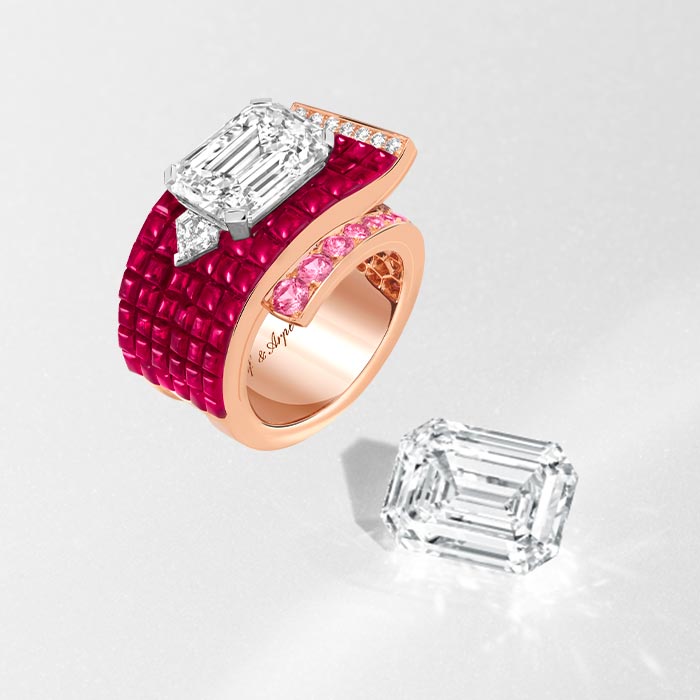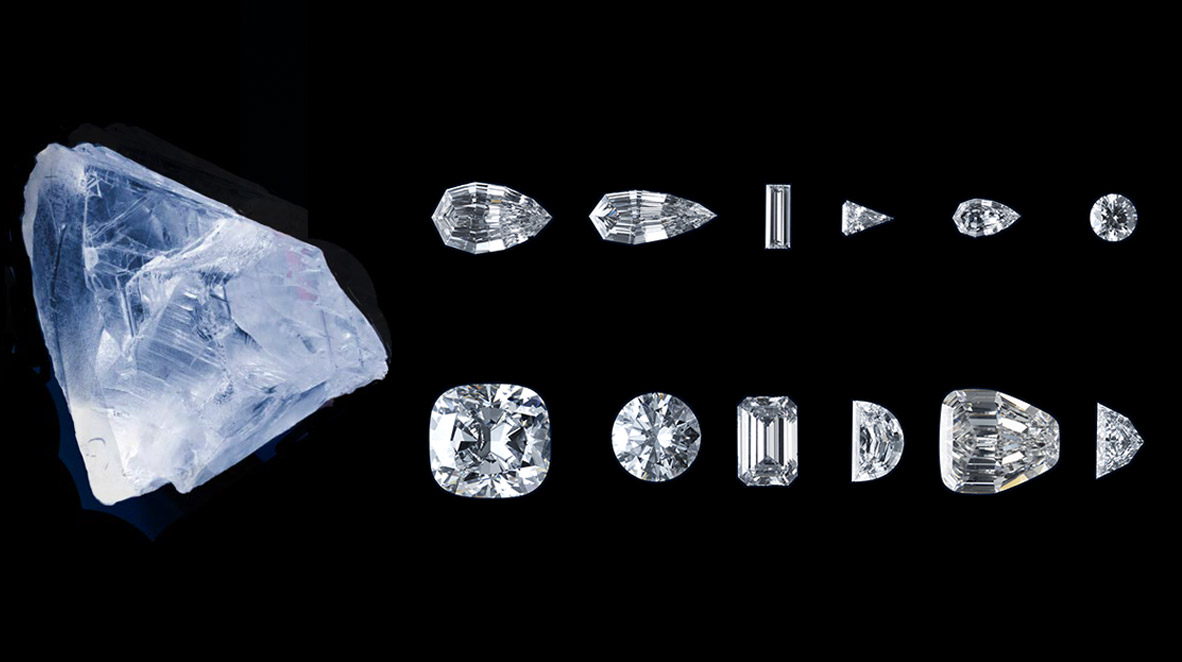Business
15 July 2022
Share
Out of the mine into the shop window
Jewelers are setting out in search of the most exceptional rough stones and transforming them into faceted creations sparkling with a million lights. It’s a rediscovery of mineralogy, and of the timeless alchemy of the Earth’s innermost depths…
Par Sandrine Merle.
Until now, jewelers have bought only cut, faceted, sparkling stones from dealers, ready for setting in their creations. Today, they’re heading direct to the mines and buying rough stones – sometimes opaque but with great potential – from the entrails of the Earth. Their aim is to divide them into a coherent set of gems that can form part of a single collection. The result of this approach was seen last July at Van Cleef & Arpels with a collection of 25 jewels featuring 67 stones from a single rough diamond – the 910-carat “Lesotho Legend”. Similarly, Valérie Messika presented the “Akh-Ba-Ka” set made from 15 diamonds cut from a rough stone of 110 carats. These two opuses confirm a trend initiated in 2019 by Graff, who split a rough diamond of more than 1,109 carats (the size of a tennis ball) into 67 stones, including one of 300 carats. Caroline Scheufele at Chopard achieved a similar feat with the “Queen of Kalahari”, a rough diamond of 342 carats. In a few months, we will discover her latest exploit based on a rough emerald of 6,600 carats, the “Insofu”.
Ever greater traceability
Buying a rough stone is one solution to the challenge of traceability. This allows jewelers to guarantee the provenance of several stones mounted on the jewel at once, and thus to assure their customers that they do not come from ill-gotten gains or child labor and have not contributed to ecological damage. “This only works in the case of exceptional stones,” says one dealer. Valérie Messika has doubled down on her approach by working with a rough diamond unearthed and cut by her brother and father. For its part, Van Cleef & Arpels bought the “Lesotho Legend” from one of its special partners, the diamond dealer Taché. And the jeweler went to examine it in the field with members of the GIA (Gemological Institute of America). A first: until then, the laboratory had only certified stones that had already made their way to its doors.
Unique and exceptional stones
Thanks to the purchase of rough stones, jewelers can customize the size of their most beautiful gems. These stones have become a sign of recognition in the same way as a logo or a motif. The technological analysis of the rough stone, a sort of cartography of its entrails, provides precisely the optimal combination of sizes with their proportions and volumes. The calculations are of course designed to waste as little material as possible, according to the cleavage zones, colors and inclusions. However, this 3D puzzle still leaves plenty of room for maneuver. “We did not want the main stones to exceed 70-80 carats, and we also preferred ovals to hearts,” says Nicolas Bos, CEO of Van Cleef & Arpels.
The archaic magic of roughness
The key is not to waste this miracle of nature, turning it into a mere reproduction. Throughout the process, we need to fully respect an element which was formed billions of years ago under the Earth. It’s fascinating, moving, and stimulating, “It makes you want to go beyond your limits,” says Valerie Messika. Rough stones are just as inspiring for Australian Peter J. Ravenscroft (formerly of De Beers and Rio Tinto) – his Maison Mazarea concept offers specimens to designers, encouraging them to see the stones as a starting point. “Today we choose stones based on the certification of a gemological laboratory,” he says regretfully. They contain infinite promises and imaginary journeys, just as much as stones that have been transformed, cut, and faceted, rendering them so perfect that they become almost abstract. We sometimes forget where they come from…
Related article:



















